Meeting NSA Provider Data Requirements Health Payment Systems’ Strategy & The Role of Madaket PDX
This past November, Madaket Health attended the 2023 WEDI National Conference in Washington DC. Our team, led by CEO Eric Demers, Co-Founder Ted Acthem, SVP Sales Martin Cody, and President of Health Payment Systems Brian Marsella, unpacked the complexities of Provider Data requirements under the No Surprises Act (NSA).
Madaket dives into how Health Payment Systems (HPS) is revolutionizing provider data management. Thanks to the collaboration with Madaket Health’s Provider Data Exchange, we’re tackling these challenges head-on. We’ll show you how to enhance directory accuracy and boost the member experience, all within the critical 24, 48, and 90-hour benchmarks crucial to both health systems and payers, without the need for extra hands.
A look back at WEDI 2023
After four intense days of networking with industry leaders, attending groundbreaking sessions, and immersing ourselves in the vibrant D.C. scene, the WEDI National Conference left us inspired and energized. For our team at Madaket Health, this wasn’t just another conference—it was a pivotal moment that redefined our approach to healthcare data management.
Thank you WEDI for curating a collaborative environment and community that empowers common sense approaches to administrative and healthcare data exchange. We can’t wait
for the next event!
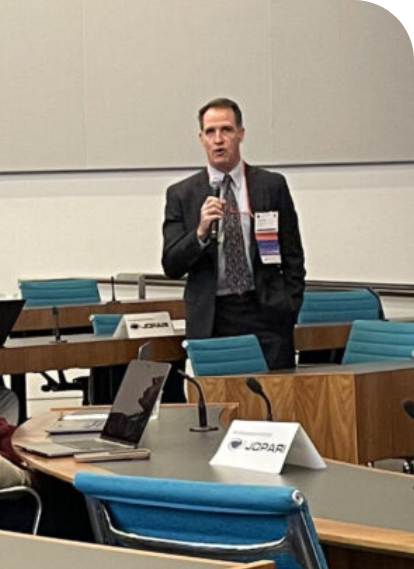
For Martin Cody, the WEDI National Conference was more than an opportunity to share insights it was a chance to connect with the brightest minds in healthcare and to reimagine the future of provider data management. The conversations, debates, and collaborations that took place during those four days ignited a renewed sense of purpose and urgency.

“After attending WEDI, I returned with a newfound conviction that the work we’re doing at Madaket Health is not just important—it’s essential. We’re not just meeting compliance standards; we’re shaping the future of healthcare.”
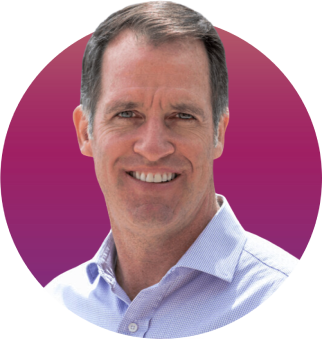
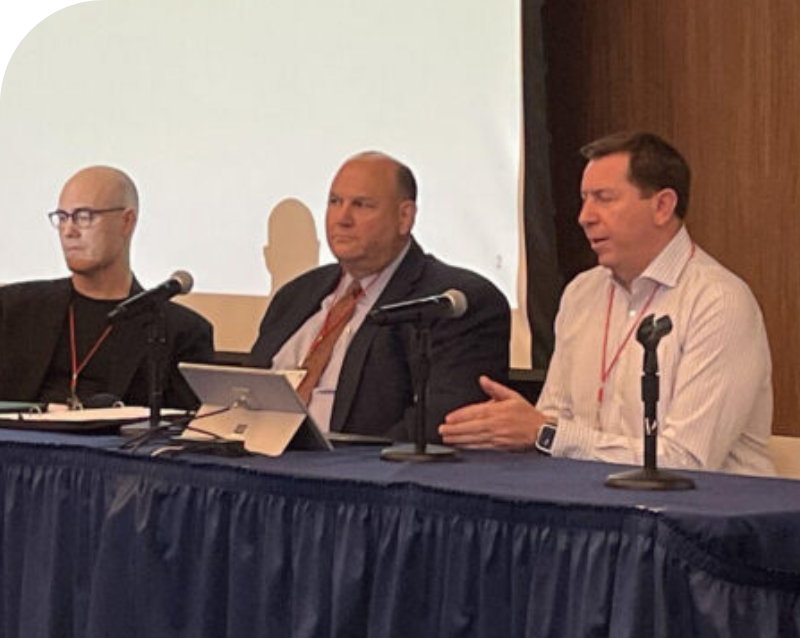
For Eric Demers, WEDI was a reaffirmation of Madaket Health’s leadership in the industry.
The sessions and discussions provided new insights and solidified the path forward for Madaket Health as a trailblazer in the world of healthcare data.

“WEDI was a powerful reminder that the challenges we face in healthcare are not insurmountable. With the right data, the right tools, and the right mindset, we can overcome them—and Madaket Health is at the forefront of that movement.”

For Ted Achtem, WEDI wasn’t just an industry checkpoint—it was a moment to solidify the role of data in healthcare’s future. As the co-founder of Madaket Health and a visionary behind its product strategy, Ted emphasized the crucial role of accuracy, scalability, and efficiency in provider data management.

“We’ve built a system that takes the chaos of healthcare data and transforms it into something actionable. Our approach ensures that no data goes untouched, helping organizations meet compliance with ease and driving the industry forward.”

With innovative modules focused on data ingestion, curation, and analysis, Madaket Health is equipped to deliver a future-proof solution for provider data management.
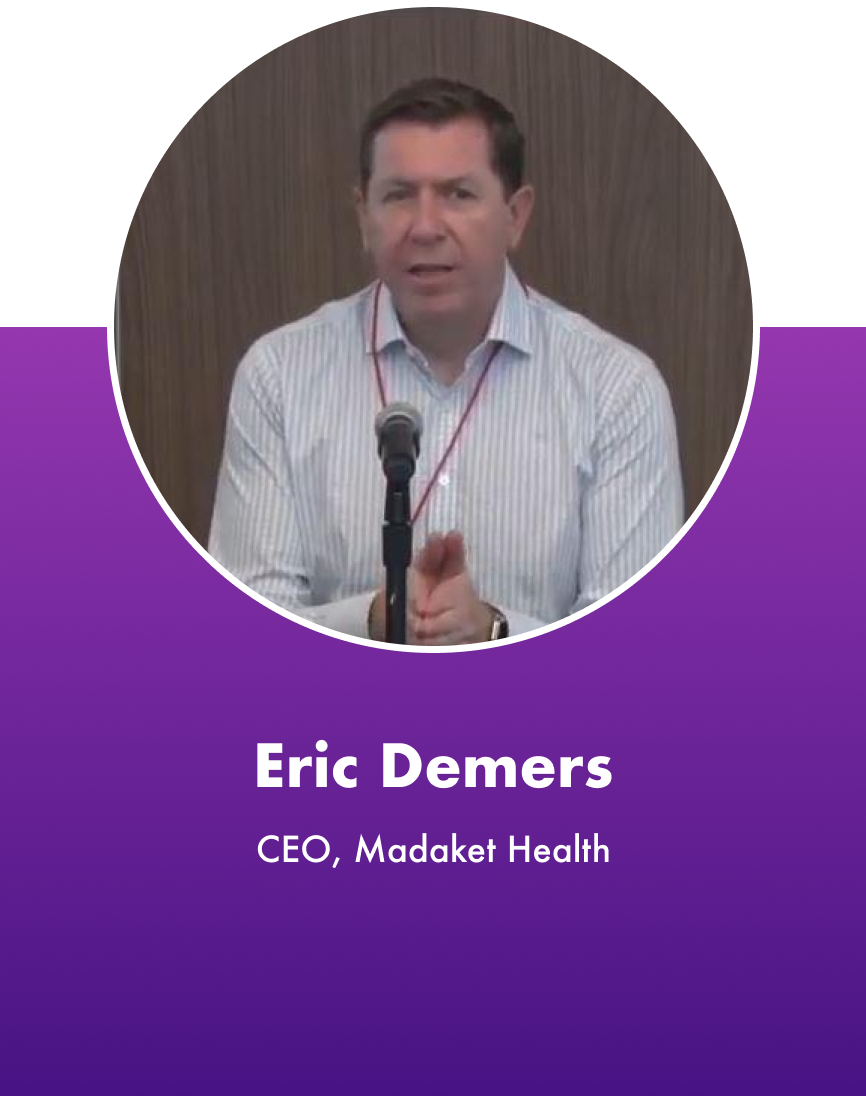
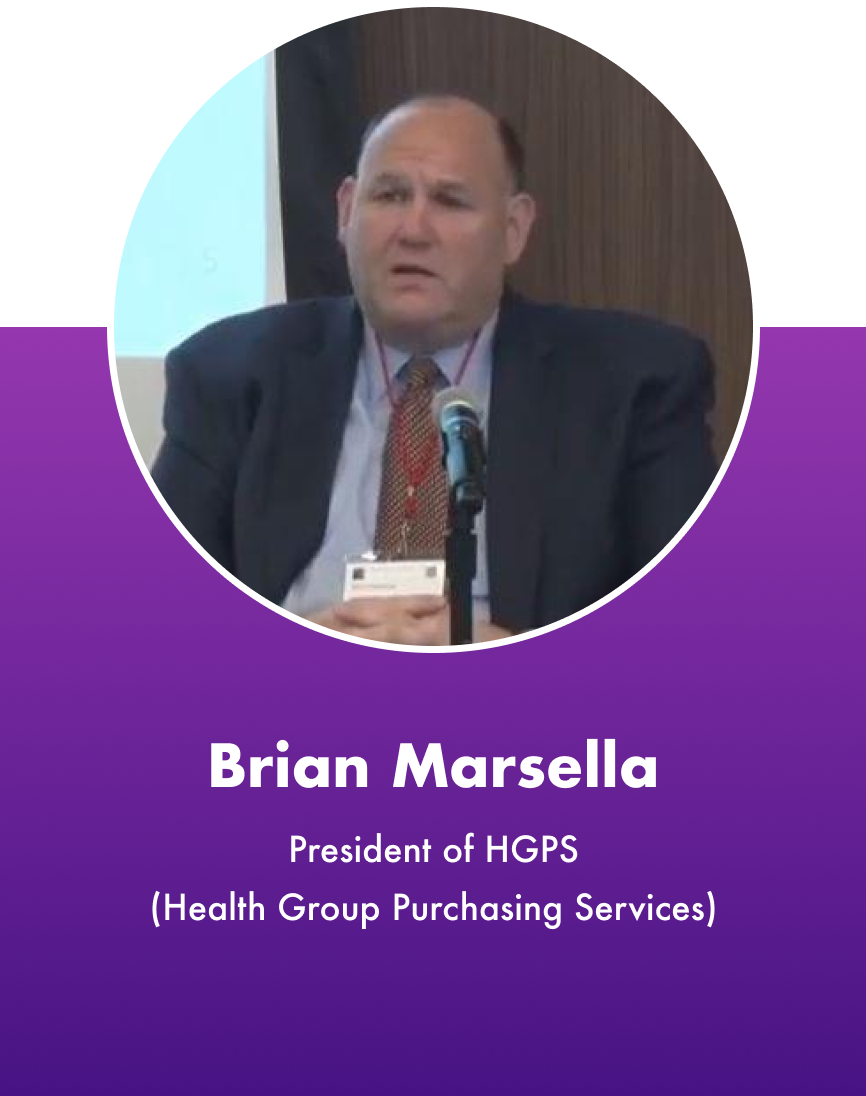
The Lifeblood of Healthcare: Accurate Provider Data
It’s clear that in today’s high-stakes healthcare environment, there’s no room for error. Accurate, real-time provider data isn’t just a requirement—it’s the difference between thriving and falling behind.
The Lifeblood of Healthcare: Accurate Provider Data
The No Surprises Act (NSA) has thrown down the gauntlet, and the clock is ticking:
- 24 hours: That’s all you’ve got to acknowledge provider data changes.
- 48 hours: The time to reflect those changes in your directories.
- 90 days: The deadline to prove your data is up-to-date—or face the consequences.

“The amount of bad data out there is staggering. It’s not just frustrating—it’s dangerous. We’re here to fix that.”

The Battle Against Data Chaos
The panel laid bare the brutal truth- that most healthcare organizations are drowning in a sea of outdated, inaccurate data. Madaket Health is your lifeline. We’re here to slash through the chaos with cutting-edge solutions that not only meet state and national compliance, but redefine what’s possible in provider data management.
The next era of provider data is already here, and Madaket Health is leading the way.
Madaket Health is more than just a solution; we represent the future. If you’re done trailing behind and are prepared to take the lead, we’re here to ensure your success. Learn how we can revolutionize your provider data management and keep you at the forefront.
Dive Deeper
Martin Cody: Everything is predicated upon a single source of truth and really accurate, clear, concise, fresh provider data. And it’s garbage in, garbage out, and it flows all the way downstream. Many of you may not have ever heard of us. We’re kind of the Intel inside. Pnc Bank is a customer. TriZetto is a customer. Inovalon is a customer. And they’re all here. But inside, we’re routing a lot of the provider data to the appropriate endpoints and then bringing it back in. And as it relates to no surprises, that’s precisely what’s going to be required.
Eric Demers: We focus on really everything prior to the physician engaging with the insurance companies to provide care to patients. Despite the simplest way to say it, we help them through all those processes to be in business together, all the administrative workflows, our platforms automate that process between the providers and the payers. That’s usually a very laborious and manual task on behalf of them. On average, a provider works with 20 to 25 different payer organizations in the country, so you can imagine the amount of churn that they incur. But through all the years of us doing that, we’ve now worked with about 80% of all provider organizations in the United States. So we’ve accumulated quite a bit of information that’s very useful in how we go about our business. And that information is what helps empower the work we do underneath the hood, around the data side of the business that we’ll be talking about today.
Brian Marsella: Hi everyone. Brian Marsella I felt like a little bit of a fish out of water at this conference because nobody in my life would call me technologically savvy. My wife would certainly say, I don’t do anything standardly. I have a tie on, and I’m sure none of you have heard of my company. Um, but hopefully I can share a little bit that will be helpful to you. I’ve been in the industry for over 30 years, mostly on the large carrier and consulting side. Um, I’ve also been the board chair of an Fqhc. So I’ve seen a lot of this, uh, churn in the industry from a lot of different directions. I’ve now become for about a past year, I’ve been the president of Hgps, which is a very small, uh, PPO network in the Wisconsin marketplace. We actually mainly focused on the eastern border of Wisconsin, um, Compete very favourably with any network that can be rented, so that third party administrators can utilize us to, to sell to self-funded employers. We started as an entity that wanted to simplify the health care system for patients. So, you know, if you go get a surgery, you might get five different bills and you’re going to get them 4 to 5 times from the providers, you’re going to get five eobs you have to try and match them up.
Brian Marsella: You’re not really sure who to pay, how to pay, or when you hold it. Um, we’ve built a single explanation of benefit billing system that you get something that looks more like a credit card statement. So we’ve really simplified things for the patient. We also realize that as high deductible plans were increasing, that became a shift to the providers and to the members. The providers are now spending more money to collect less. And so we’ve built a system where we pay the provider, both the employer and the employee portion of the bill, and that’s allowed us to have really strong relationships with these providers, really strong NPS of 75, compared to the industry norm of below 25. We’re now looking to take that outside of Wisconsin, and we’re looking to continue the financing and simplification. We don’t want to own other networks, in large part because of all the work that needs to be done and things we’ll talk about today, we will want to partner with existing networks and take the financing and simplification external of Wisconsin.
Martin Cody: Nsa requirements. Who can tell me what you have to do within the first 24 hours of receiving a provider data change, according to the No Surprises Act. You also didn’t know this is going to be linked to payroll deduction. Your organizations have authorized that if no one knows it, you have to acknowledge as a health care organization or a payer that you’ve received that update of provider data within 24 hours of it being sent. Uh, that is a red alarm for a lot of organizations because they don’t they don’t know that they have to do this, number one. But think about your organization, how you’re receiving information. It’s coming in sometimes via rosters. It’s sometimes coming in via Salesforce instances. It’s sometimes coming in via Jira tickets, via fax, via text, via email. How are you supposed to notify that provider organization that yes, we received your information. Who knows what you have to do within 48 hours? Are there any payers in the room? Okay. What do you have to do with that? Received data within 48 hours. Correct. You’ve got to update your member facing directory within 48 hours of that new information. And this is where we talk about member scores, uh, patient and member experience, and the amount of incorrect data that is in member facing directories is off the charts. Uh, and this is where a patient will tell you their grievance that says, hey, it says on your website that you’re seeing new patients. Oh, the website’s wrong. Or it says that you’re in my network.
Martin Cody: Oh, that’s wrong as well. And so now that member experience has just gone downhill at a light speed pace. And last but not least, who can tell me what you have to do within 90 days? There’s going to be fines on this very soon. Not from us, but CMS is salivating at this. You have to attest that your provider data’s your provider directories are up to date. Now we’ve talked about attestation or there’s been discussion about attestation this week and a lot of the different breakouts. Um, one thing that wasn’t discussed is true or false. Attestation means accurate false. There was a 5050 chance. You all did. Well, uh, correct. But you have to attest, every 90 days that you’ve looked at this data, that this data is what you’ve received, that your directory is up to date doesn’t mean your directory is accurate and the same downstream member. Bad experiences can happen where if you’ve got Doctor Cody who has five practices locations for pediatrics, and I’ve stopped seeing patients at one of the locations, but I haven’t updated our directory, and that’s still showing on the website of that pediatric practice or the directory for the payer. That’s a bad outcome, and that’s the sort of stuff that CMS is going to start finding on. Now, it remains to be seen when they are going to start finding again because they started. But then everyone was in an uproar because they said, there’s no way we can comply with this. We don’t have the bandwidth, we don’t have the rails, we don’t have the staff.
Martin Cody: Uh, and it was one of the questions that I asked on the Wovea app with regards to when do you think CMS will start initiating fines or renew the fines? Because we hear it all the time in the industry, I’m not doing anything until the penalties come. I don’t have the time. I don’t have the staff. When they start finding people, then we’ll get our ship in order. So 55% of the respondents of that survey said they don’t think CMS is going to do any penalty initiation in 2024. So this is another whole year potentially of not no stick to cause any type of action but the payers that are taking action now will be well ahead of everybody else because this is fairly easy from a market perspective on what we do with provider data, because it’s all we do and we’ve been doing it for over 12 years. So we’ll get into the weeds now that you know what the requirements are. But think about it. This is Eric said. This is everything that happens prior to the provider seeing a patient. So NSA compliance and organizational needs through the lens. And Brian reached out to me over a year ago and said, we need your organization to help us because our provider data is filling your own expletive. It was it was not pretty. So, Brian, I’ll let you talk a little bit about kind of what you experienced when you came on board.
Brian Marsella: So as I came on board, um, I actually had a little overlap with the prior president, which is kind of good to be able to have to be able to do that. And he left me a listing of what he called big rocks and under Big rocks was compliance with NASA. And, um, he said, yeah, I just we haven’t done a lot with it. He said. We used to take weeks, if not months sometimes to update things. We’ve improved that to somewhere in the, you know, doing doing it within a week. But we haven’t really, you know, complied with the two day turnaround by any means. Um, so I attacked that and we actually hired we actually took our staff and figured out how to deploy them to make sure that happened. We only have 100 hospitals, we’ve got 27,000 providers, and we’ve got about 700 contracts. So we’re not large and we only do commercial. But but the fact that I had to have two and a half people that were always on call to be able to do this, will give you a sense, I think what some of the other organizations that are larger are going to be dealing with. So we solve that, and I’m very confident we’re meeting the two day turnaround time. Uh, from that perspective. Uh, I then actually was doing an addendum process and can’t tell you how many times we got something back from the providers. We use DocuSign to send it out. And they said our name is off by slightly or we now have a different address. And that made me really understand that we’ve got a lot of issues to do.
Brian Marsella: I then actually had a financial hit come in. We had a hospital listed as having an urgent care and an emergency care at the same location where they really only had urgent, I mean, emergency care. So guess what? Somebody went in, they went to the they went there and expected they were going to have the it adjudicated as an urgent care versus emergency. I actually I believe in, you know, you know, uh, stepping up when you’ve made a mistake. So we actually paid the differential between the urgent and care. That’s when I said, we’ve got to get serious and figure out how do we how do we do this? Of our 700 contracts, about 20 of them come in as roster files. And, you know, we weren’t even automatically uploading those technologically. We were manually adjudicating those. So I couldn’t even if they were attesting pre attesting to things, I couldn’t even say for sure that we put them in the directory properly. And then all of the other contracts, the other uh, and that accounted for almost 70% of our, of our changes. That would have to be made. The other 30% come in through 680 different ways. As Martin was saying, we get some in email, we get some via phone call. We get some through a Zendesk ticket. It’s all over the place and we really there’s just no way with our technological system where we’re we’re trying to ramp that up to be able to do more payment outside of Wisconsin so that we can pay providers, both the employer and the employee portion.
Brian Marsella: As I mentioned earlier, um, we just couldn’t do this internally. And, you know, I have so many other needs within the organization of where to where to use our, our people and, and use our resources. So we did an RFP and we looked at about 5 or 6 different entities. And we found that it was going to be able to really do the most for us up front and actually helping us take these disparate ways that we were getting information and be able to pull that all together. We also, I was a bit embarrassed to look at our portal, our our website that had the the network in it, and so we wanted to upgrade that significantly. And that’s part of what we’ll be doing with Medicaid as well as as the source of data. They will also now be able to make sure we’re upgrading that that website experience to be visually better, but also have more information that can be actionable by a member when they’re trying to make a decision on what provider to even go to in the first place. It quite frankly, took us a long time to make sure we knew exactly what we were doing to maybe figure out what we needed to have done, and then we had some great conversations about, well, why you don’t need to do it that way. Here’s a better approach. And it’s been an incredibly consultative back and forth discussion with the folks at Madaket, and they’ll be able to help us scale nationally as we go to build our patient financing network externally.
Martin Cody: And I’d encourage everyone to kind of look at your own member facing directory, if that’s something that you have, and view it from the eyes of a patient and see how easy it is from a guy, a UX experience to schedule a visit at a provider that is accepting new patients during the accurate office hours and the plan that you want to participate in, Chances are it’s not as easy as you hope, need would want. I’ve heard it on a number of regulatory calls here with Wedi and the provider work sub work group, where the payers are saying I have the app on my phone for our insurance plan, and it says in our own plan that that provider is in network, and then we go to that office and the provider’s not in network. And I work for the company. So most patients don’t work for large carriers from that standpoint. So view it from the patient’s experience, because what Brian’s identifying was with their network and the experiences people were having both internally and externally, is not isolated. We hear it all the time. And that’s the part that is actually going to then feed the GFS the price transparency, because you have to make certain that that provider is who they are practicing, where they are, in which networks you can actually effective a good faith estimate in that capacity. I do want to talk at technology at scale. Ted Achtem is co-founder of Matakite and also oversees product. And so he’ll talk a little bit about and I loved all those questions from the last session, uh, how he envisions this philosophically and going to market with regards to helping you all scale from an NSA standpoint.
Ted Achtem: So four key modules that I want to call out today, uh, that really comprise the bones of what what we’re doing. The first one is around data ingestion. So as you all know, and as Brian called out currently, you know, data is being communicated. Provider data provider organization data is being communicated in a whole host of formats, largely in the Excel world, but within their structurally all over the map. It also comes in via fax, which gets converted into emails. It comes in just in the body of emails. Um, so we um, we have a platform. Our data ingestion module can handle any of those different types of, of formats. So philosophically here, what we wanted to do is make sure that there was no barrier to sending us data. And we were we will do. We are doing the heavy lifting in converting that data and being able to ingest it. We take that and put it into a common sort of internal representation so that we can process it. Right. So second module is really on processing right. This is data curation. So we take all the data that’s coming in and we score that data. So different sources of data have different levels of quality. And that’s a very important attribute for us from the perspective of being able to determine what is the most recent or the highest quality data.
Ted Achtem: And it’s really quality accuracy that we’re after. There’s a correlation with recency but not but not always. And as we start to expand the breadth of the data that we’re ingesting Right. we as part of our broader platform outside of just Https, we do. As Eric mentioned, we have do a lot of transactions through our system. There’s a lot of provider and organizational data coming in, and this is all transactional data that’s being done on our system. So audit history and all that good stuff, it’s sort of part of this module. And the output at this point can be used to power a public provider search directory. Right. So we are going to stand up a, you know, a new modern interface for, for, for Https. But the, the actual value there, which is the curated data, uh, that is coming out of this, this data curation module, module three is really around analysis, right. Look at KPIs. Look at reporting. Uh, Martin’s slide earlier around the 24 48 and 90 days. Right. Those are key performance indicators that we need to that we need to hit. We want to be tracking them as well as from an HBS perspective, we want to give sufficient visibility so that they can see what’s going on.
Ted Achtem: But this is all at the analysis level, right? There’s too much data under the hood. There’s no way you can inspect it visually. What happens if one of those performance indicators, uh. Does not meet expectations? And that’s really our fourth module. And that’s around data integrity and data completeness. So here is where we leverage the sort of experience around reaching out to the community, reaching out to provider organizations, providers, other intermediaries to to complete the the data to to track down the missing data in order to hit the 90 day compliance, the 48 hour compliance, and so on and so forth. So there is a component there as well that historically in directories from an attestation or verification perspective, yes, there has been an attempt to handle sort of inbound data updates, but there are also lots of providers out there that have not been interacted with touched in two years, three years. Now, the data may still be accurate, but from an NSA perspective, we need to be able to verify that. So from an overall solution completeness perspective, that is also a critical component to fold in and report on and show analysis.
Martin Cody: And it also introduces just to interject, not only is there data accuracy components from analysis, but for Brian’s group it introduces Bless You. For Brian’s group, it introduces some business use cases as well. Well, if we haven’t heard from a provider in 75 days and they’re bumping up against that 90 day mark, what do we do as an organization and then determining what are our outreaches? Is it three calls an email and then someone runs by the office to see if they’re still alive. I mean, what is the use case for that? So do you have, Brian, some thoughts on some of the conversations that your group experienced in this whole process?
Brian Marsella: Yeah, I think that, um, you know, we know we need to get closer to our providers. So this will be good. We didn’t have any way of tracking when it was the last interaction with these providers by any means. Small staff. Again, we’re under 50 employees overall. The other thing that’s interesting about the NSA requirements is it doesn’t actually say you have to pull them out of the directory after 90 days, right. There’s still a lot of, uh, a lot of gray areas to exactly what you do, but we’ll be needing to make business decisions on. Do we, you know, do we pull them out? But we could keep them in a, in network if somebody happened to bump up against them. Do we wait 180 days? Do we go through the process. So there’s still a little things that we have to go through and make sure we understand. Um, but that’s that’s the kind of thing that we that’ll be helpful to us. It might trigger me to make sure I have my provider relations team make an outreach. It might trigger to me to send out an addendum and try and find if we can get some, some engagement. So there’s going to be all kinds of different ways that we’ll use it. We are looking, you know, to market to really do the attestation and help keep us compliant because that’s a big piece of what we weren’t we’re not going to be able to do. But but we have to we ultimately own the relationship. We need to make sure that we that we’re folding those two things together, the compliance and the fact that we want to make sure we have providers that enjoy being part of our network, that are treating our members properly, etc..
Eric Demers: Well, it’s interesting in that conversation as well, is that this rule is actually driving some of that provider conversation. That hasn’t really happened much at at scale in the past. Right? So if you think of those large directories, especially in a large payer organizations, that we’ve been involved with, those conversations, when you take someone out of the directory, how do you know that their location has changed if they haven’t updated? And then if you start to take on risk based plans and some other stuff with your providers and you’re assigning members out by, you know, zip codes or different providers that you believe are part of those organizations that you are working with. And you follow through that process, and then you can find out six months later that, oh, by the way, they haven’t worked here in a year and a half. And there’s now a whole gap in that process. We see that quite often. And that leads to a lot of challenges, both on all three sides from a payment perspective, from a revenue leakage perspective side, and then from the member experience as they go through that process as well.
Brian Marsella: Yeah. The other thing is adding a provider and all of the groups that we went through the RFP process, none of them were really going to be able to share with us that if a provider was added, they were just going to analyze what we had in the system and was it accurate? And that was one of the things we really liked. Traumatic is they would be sharing with us. Look, we see that there’s a new provider at this, at this entity, and I think we’re going to start seeing a pendulum of a lot of providers going back to trying to be independent. There was a huge groundswell of them going to to work for the hospitals. I think you’ll start to see that going back the other way. We definitely are seeing it in Wisconsin. And that’s going to be, you know, they’re going to go away from being in a roster file and they’re going to go to being one of those one offs. And we may need the the interaction even more at that point.
Martin Cody: And it’s interesting Eric and Brian talked about adding a provider. We recently did kind of an adjacent project with a large clearinghouse that was curious if they could link NPI number to the appropriate fax number at the office, and they sent us a test case of 100 NPIs. And could we find the fax number so that they could correlate the two? And lo and behold, in doing that work, we would, you know, get in touch with the office via automated outreach and finally drill down to who we need to do, like, yep, the fax number is correct, but that provider is no longer here. Hasn’t practiced here in two years. So their data at the clearinghouse level was all from that standpoint. It lacked the accuracy that they required. And when you think about the manual processes that an office administrator has engaged in over the years, that they’ll just check 25 boxes on these plans that says, here’s my address, here’s the five locations that we’re seeing patients. But when one of those locations changes, they aren’t going back and updating 25 plans. So those 25 plans are sharing that information and they’re just sharing bad information because it’s not accurate. It’s not pristine. It’s not a single source of truth. So that’s what we’re trying to solve here. We can have you compliant with NSA around provider data in 120 days. You will never have to worry about it again.
Devon Hunter: Make the move to medicate.
© 2024 Madaket Health | Privacy Policy | Terms & Conditions